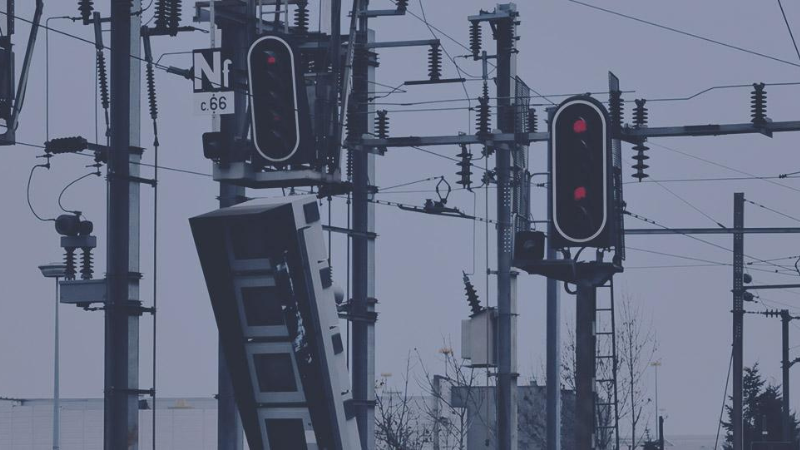Why LEDs Should Be Used in Traffic Lights

LEDs have quickly taken the lighting industry by storm and many people are changing their current lights to keep up with this. There are many pros to using LEDs, especially in areas that require large amounts of quality lighting or specific types of light. Even though LEDs are slightly more expensive, their maintenance costs are much lower, making them the preferred option.
Specialists from various industries have realised that LEDs are far superior to traditional lighting which why it is necessary to use LEDs in traffic lights around the country.
We're exploring the need for change and highlighting the pros and cons of switching to LEDs.
Why LEDs are becoming the chosen source of light
A light-emitting diode is a tiny semiconductor that emits visible light when an electric current passes through it. Unlike traditional bulbs like the incandescent bulb, there is no filament.
There are many reasons why people are choosing to switch to LEDs, these reasons include:
-
Energy-saving: LEDs require less energy because they draw far less electricity than other types of bulbs, such as fluorescents and halogens. LEDs only lose 5% of the generated energy to heat, and the rest is converted into light.
-
Environmentally friendly: Unlike fluorescents and incandescent bulbs, LEDs do not contain highly toxic mercury. This helps reduce toxic waste when the LED bulbs are disposed of. The fact that LEDs also last a very long time means you purchase fewer LED lamps which in turn means less waste in the form of packaging, transportation, and disposal. Switching over to LEDs is ultimately a simple way to lower your carbon footprint.
-
Affordability: LEDs are on the fast track to becoming more affordable. Not only that but the fact they draw less energy and last longer saves you money on bills and maintenance.
-
Longevity: LED lights last much longer than other lighting products. LED bulbs and diodes have a superior operational life, some can even last up to 200 000 hours depending on the usage. LEDs typically last up to 25 times longer than halogen and incandescent bulbs, and up to three times longer than CFLs. Additionally, LEDs do not have filaments or glass bulbs, which makes them very durable
-
Maintenance: Unlike conventional light sources that reduce output and abruptly fail, LEDs do not normally suddenly stop working and they do not require much maintenance. This is not only a huge time saver, but also saves money on servicing and repairs.
These are just some of the reasons why LEDs are a popular choice and why many large industries are switching to them.
Why LEDs are used for traffic lights
Traffic lights are a vital part of our society, they provide instruction that we all need to follow to ensure we all get to our destination on time and safely. We all know the frustration when the robots are out and we're stuck in traffic for ages.
Did you know that each year, the thousands of traffic lights around South Africa cost approximately R55 million a year? However, according to transport engineer Jan Coetzee, replacing all traffic signal halogen lamps with LED lamps would reduce this cost to R20 million a year.
This only shows how switching to energy-efficient LED lamps trims municipal budgets and lowers energy-use nationwide.
The benefits of switching to LEDs include:
-
LED lights only produce light in the desired colours (red, yellow or green) making them ideal for traffic signals. There is no need to filter the light through a lens. As a result, true colours are produced more efficiently, with minimal waste of heat energy.
-
LED lights also look brighter since the light is distributed equally across the entire surface (an advantage in poor weather conditions).
-
LED lamps can last up to 100 000 hours because there are no filaments to burn out. This means that relamping cycles and emergency replacement projects decrease, reducing maintenance costs.
-
LED lights also increase traffic safety as they minimize the number of signal outages and due to their low energy consumption, LEDs are more economical to use with battery back-up systems. Batteries can keep LED traffic signals functioning for up to 24 hours in the event of a power outage.
-
LED bulbs save a lot of energy.
In conventional systems, traffic signalling modules consist of halogen lamps that use up to 720W. However, this system consumes high levels of energy and breaks down often; requiring large amounts of maintenance.
Using LEDs opens the possibility of using solar panels instead of running an electrical line, which saves money in remote areas.
There are a vast amount of benefits to switching to LEDs and this doesn't only include traffic lights. Many industries, organisations and households will benefit from switching to LEDs. Please contact us for more information on this!